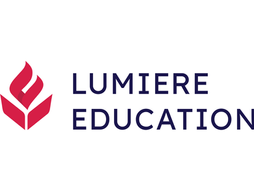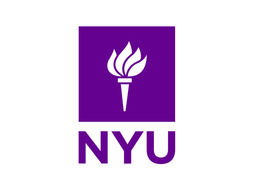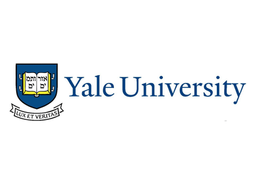Everything You Need to Know About Rockefeller University's Summer Science Research Program (SSRP)
If you want to apply to a STEM program in college, consider participating in a research program while in high school to boost your college applications. Research programs are a good way to show admissions officers that you're serious about learning and have experience working on real-world projects.
They give you a chance to work with experts, advance your STEM knowledge, and demonstrate your ability to handle challenging academic work. If you’re a high schooler aiming for competitive universities, our blog today covering Rockefeller University's Summer Science Research Program (SSRP) will be of particular interest to you.
What is the SSRP?
The Summer Science Research Program (SSRP) by Rockefeller University is a free, in-person, six-week-long research opportunity that gives high school students hands-on research experience in dedicated RockEDU laboratories. The program gives you the opportunity to be part of a biomedical research team led by scientists and trainees from the Tri-Institutions (Rockefeller University, Memorial Sloan Kettering Cancer Center, and Weill Cornell Medicine).
During the program, you will work alongside leading scientists in small research teams, gaining insights into how research is conducted in a professional environment. You'll learn essential lab techniques, scientific reasoning, and the process of scientific inquiry. You'll also develop skills in problem-solving, data analysis, and collaboration, which are all crucial for future success in STEM and beyond.
How is SSRP structured?
The SSRP stretches over six weeks (June 23 – August 7) with a schedule as follows:
Week 1 is the introductory period to acquaint you with the research topic and analysis techniques that will be used.
Week 2 is when you will choose a specific research question related to the main topic that you will be personally exploring through the course of the program.
Weeks 3-5 is the main part of the program. You will be guided by the scientist-mentors of the research group in your pursuit of the research question and spend much of your time collecting data and using various research techniques in the laboratory.
Weeks 6 & 7 is when you must finish your data analysis and design your final submission poster. You will present your findings at the symposium hosted at the end of the program.
Each SSRP team mirrors the structure of real research labs: 4 teams of 8-10 scholars each, headed by 1-3 team leads and supported by additional scientists. Whichever team you’re a part of, you’ll be working out of a dedicated RockEDU laboratory at Rockefeller University's campus in New York City, where you will be spending at least 35 hours a week conducting experiments, analyzing data, and discussing results with your mentor. The program also includes seminars and workshops that help you learn about various aspects of scientific research and communication.
Is it prestigious?
SSRP is highly selective and admits only 32 scholars every year, making it one of the most prestigious summer research programs available to high school students. With such a small cohort size, we can expect the program to have a low acceptance rate. Gaining a spot in this program can significantly enhance your academic profile. In addition, the program provides exposure to real biomedical research under the guidance of experienced scientists and researchers.
This program also offers solid networking opportunities since teams are small and close-knit. The projects themselves allow you to pursue specific research questions you’re interested in and gain insight into how professional scientific research works. All in all, we’d rate this program as a prestigious opportunity.
Who is eligible to apply?
To apply for the SSRP, you must:
Be a high school junior or senior at the time of application
Be at least 16 years old by the start of the program
Have a demonstrated interest in scientific research
While there are no specific academic criteria, note that entry is still extremely competitive.
How does the application process work?
The application process for SSRP requires you to:
Submit an online application by January 3 at 11:59 p.m. Eastern Time.
Arrange to have your recommendation letters from a science teacher or mentor who can speak to your academic abilities and passion for research sent in by January 6.
If you’re shortlisted, you will be called for an online interview in March, and final decisions will be shared in April.
Are there any costs involved?
There is no application fee or cost for the program. NYC students will receive a MetroCard/OMNI card, and financial aid is available for students who need support with other transportation costs. Students facing financial hardship will also have the option to apply for a stipend. Do note that this program doesn’t provide housing.
Pros and Cons of the SSRP
Pros
You’ll be working with top scientists: The SSRP gives you the opportunity to work with leading researchers, which is a valuable experience for anyone interested in a science career.
You will conduct hands-on research: You’ll conduct real experiments, analyze data, and contribute to answering the research question you have chosen to pursue, getting a taste of what working in a research lab is like.
It’s a great networking opportunity: The program’s small cohort size and tight-knit teams let you build meaningful connections with the senior researchers and mentors, which can lead to future collaborations and academic opportunities.
It’s a good way to build research presentation skills: Presenting your findings at the end of the program can strengthen your communication skills and enhance your college application.
Cons
Admission is competitive: With a cohort size of only 32 students, the SSRP can be difficult to get into, meaning not all qualified students will have the chance to participate.
The time commitment is significant: The program requires a solid 35 hours of lab work per week at the very least. This could be challenging if you have other summer obligations.
No housing is provided: SSRP is conducted in person only, and the program doesn’t provide housing in NYC. This means students who are not from the city will have to make housing arrangements, which may not be possible for all students who want to participate.
Is it legit?
The SSRP is an excellent opportunity to be part of advanced research alongside scientists and researchers at one of America’s top research institutions. It is a completely free program with a small cohort, blending accessibility with prestige. At the same time, it is competitive to get into and is in-person only, factors you will have to consider seriously when applying. If you can find housing in NYC, the learning experience, networking opportunities, and prestige of the program make it worth it.
One other option—the Lumiere Research Scholar Program
If you’re interested in pursuing independent research, you could also consider applying to one of the Lumiere Research Scholar Programs, selective online high school programs for students founded with researchers at Harvard and Oxford. Last year, we had over 4,000 students apply for 500 spots in the program! You can find the application form here.
Also check out the Lumiere Research Inclusion Foundation, a non-profit research program for talented, low-income students. Last year, we had 150 students on full need-based financial aid!
Stephen is one of the founders of Lumiere and a Harvard College graduate. He founded Lumiere as a PhD student at Harvard Business School. Lumiere is a selective research program where students work 1-1 with a research mentor to develop an independent research paper.










